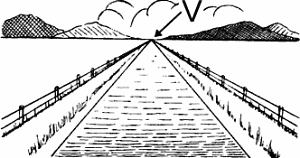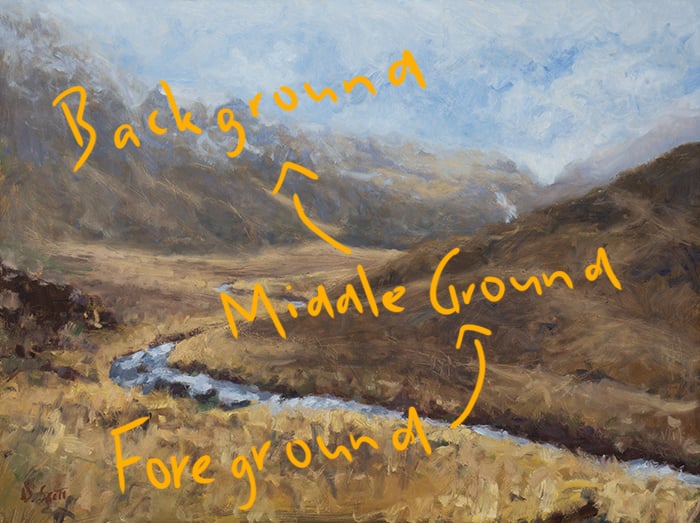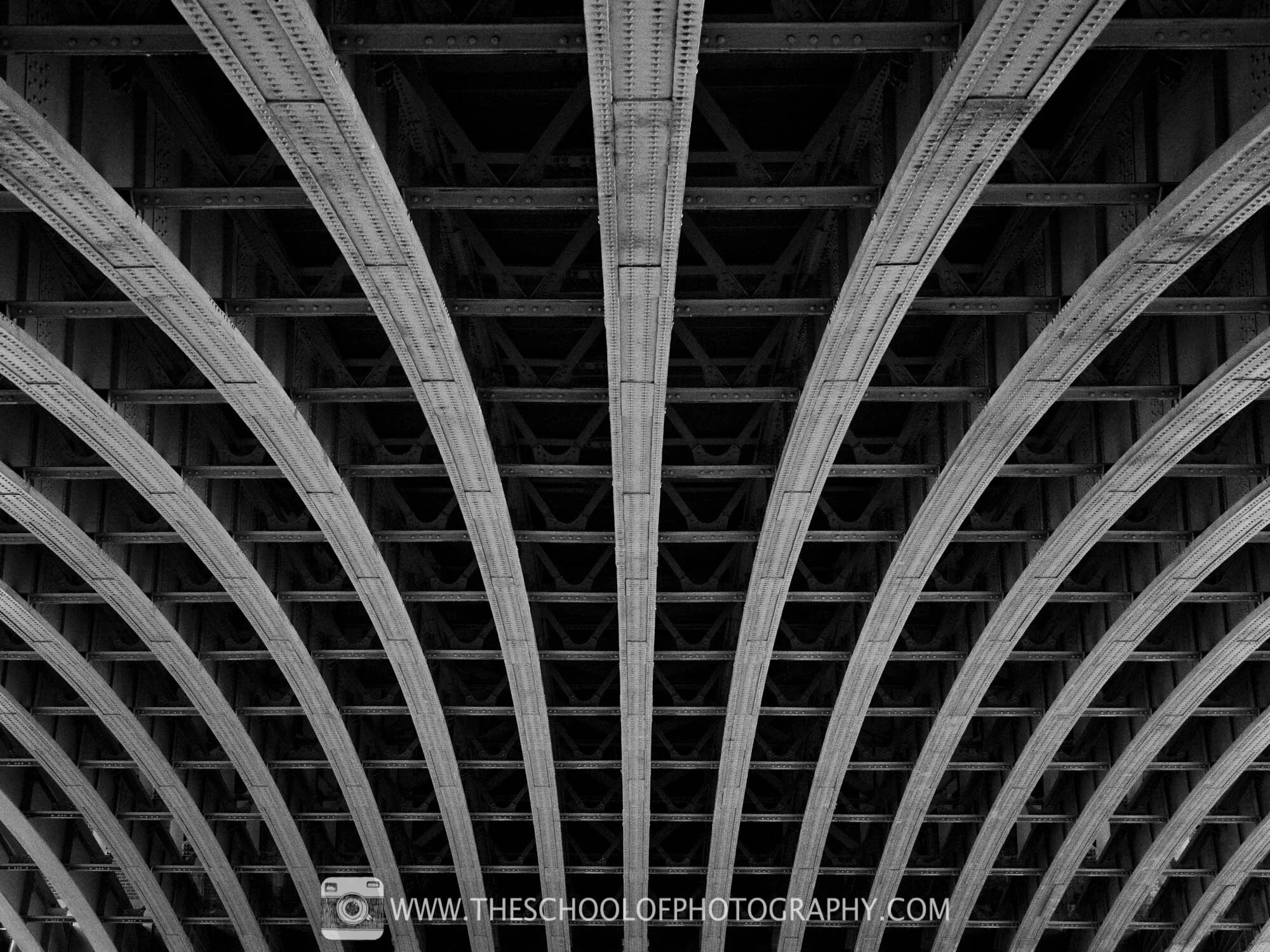AD 150 Final Exam - FORMAL ANALYSIS
1/69
There's no tags or description
Looks like no tags are added yet.
Name | Mastery | Learn | Test | Matching | Spaced |
|---|
No study sessions yet.
70 Terms
Analysis
A detailed examination of the elements or structure of something.
Line
An actual or implied element in a composition.
Value
Relative light and dark, with or without the presence of hue. (high-value samples are light, low-value samples are dark)
Shapes
Circles, triangles, squares, etc.
Forms
Encompasses qualities of line, shape, color, light, texture, space, mass, volume, and composition.
Color
A category of visual experience including hue, value, and saturation.
Axial Balance
The two sides may be actually different in form but sufficiently similar to make the axis positively felt.
Occult Balance
Control of opposing attractions through a felt equality between the parts of the field. It employs neither explicit axes nor central points. The absence of actual axes or focal center emphasizes the relativity of all the elements in the field. And it means opposing elements that are different rather than alike. 
Low Contrast
compositions use colors with minimal difference between light and dark areas
Moderate Contrast
compositions use colors within a moderate range of luminosity or brightness levels
High Contrast
composition use colors that range from very light (high luminosity) to very dark (low luminosity)
Movement
the way a viewer’s eye is directed to move through a composition, often to areas of emphasis
Emphasis
The part of the design that catches the viewer's attention.
Pattern
A coherent visual structure, usually created by repetition of similar design elements.
Proportion
The relationship between the different sized components within one whole composition.
Unity
When all parts of the art design work in harmony to create a sense of completeness.
Color Scheme
A plan for selecting, organizing, and using colors in a specific application.
Achromatic
Having no visible hue or color, only black, white, and a range of grays. Or if a color scheme has a single color featured element highlighted.
Monochromatic Color Scheme
Containing only one hue. The use of a single hue and its variations (tints, tones, and shades) to impart color to a composition.
Analogous Color Scheme
Colors adjacent on a color spectrum, sometimes defined as hues limited to the range between a primary and secondary. A group of colors including any two primaries but never the third.

Complementary Color Scheme
Colors directly opposite each other on the artists’ spectrum or color wheel. Each pair of complements contains the three primary colors (red, yellow, and blue) in some proportion or mixture.
Split Complementary Color Scheme
A color scheme formed from any hue and the two hues at each side of its complement. The three colors are NOT equidistant on the color wheel.
Triadic Color Scheme
A color scheme formed from any three hues equidistant from each other on the color wheel.
Tetradic Color Scheme
A color scheme formed from any four hues arranged in two complementary pairs.
Saturated Color
The most intense manifestation of a color imaginable. Colors that are undiluted by black, white, or gray. Synonyms are pure color, or hues at maximum chroma.
Saturation
the degree of purity of a color; its hue intensity or vivid quality, as opposed to muted or dull quality. A fully saturated color can contain one or two of the primary colors but never the third. Saturated color does not contain any black, white, or gray.
Contrast
the pairing of elements or colors that are opposite from one another
Symmetrical Composition
When visual elements are balanced around an axis or radiating from a point.
Bilaterally Symmetrical
Visual elements are materially the same or mirrored on either side of an axis. Can be the same reflected about either a horizontal or vertical line.
Radially Symmetrical
Elements radiate from a central point.

Asymmetrical Balance
Balance that relies on non-symmetrical design components, in which both sides of the work are not the same or divisible.
Translational Symmetry
Elements are shifted to produce a repeating pattern or array of the same elements.

Vanishing Point
the point in fictive space that is supposed to appear the furthest from the viewer - the position at which all receding parallel lines meet. 
Horizon Line (A.K.A. Eye Level)
the distant point at which the sky and ground appear to meet. The line on which the vanishing points lie in an accurate perspective.
Atmospheric Perspective
The effect of an intervening body of air between an object and the viewer, causing a softening of outlines, blurring of colors, and loss of detail at the horizon; the simulation of depth in two-dimensional art by the portrayal of this effect.

Foreground
helps lead our eyes toward the focal point in the middle ground

Background
provides contrast, depth, and context
Ground
the background against which colors, forms, or shapes, are laid
Negative Space
The area around the primary objects in an art piece
Positive Space
The space occupied by the primary objects.
Geometry
Studying the relationships between lines, angles, and surfaces.
Realistic Space
Three-dimensional space.
Space
a feeling of depth or three dimensions
Depth
creating the illusion of three-dimensional space on a two-dimensional surface
Texture
the quality of surface and its relative smoothness or roughness. It may be actual or implied
Grid
a network of lines – physical or implied – that may be horizontal, vertical, angled, irregular, broken or continuous, curved, and/or circular. A network of coordinates.
Law of Thirds
The rule of dividing a rectangle or square into thirds vertically and horizontally, with the four intersecting points being the points of optimal focus.
Chroma
A synonym of hue and color; the name of a color. A vivid color has high chroma, a muted color sample has lower chroma.
Hue
The name of the color - red, orange, yellow, green, blue, or violet.
Hue Intensity
The saturation or purity of a color; its vivid versus dull quality.
Pure Color
The most intense manifestation of a color imaginable.
Primary Colors
The simplest colors of the artists’ spectrum; those that cannot be reduced or broken down into component colors. RED, YELLOW, BLUE
Secondary Colors
Colors made up of two primary colors. In artists’ media, orange (red and yellow), green (blue and yellow), violet (red and blue); in additive mixtures cyan (blue and green), yellow (red and green), and magenta (blue and red); in process colors red (magenta and yellow), green (yellow and cyan), and blue (magenta and cyan).
Tertiary Colors
Colors made of any mixture of the three primaries; “brown” or chromatic neutrals. Or, a hue that results from the mixing of a primary hue and an adjacent secondary hue.

Intensity
Sometimes used as a synonym for brilliance, or the strength of a hue
Brilliance
The combined qualities of high light-reflectance and strong hue, typically found in saturated colors and strong tints.
Subtractive RYB Color Model
the primaries are RED, YELLOW, and BLUE.
Additive RGB Color Model
the primaries are RED, GREEN, and BLUE
Process CMYK Color Model
the primaries are CYAN, MAGENTA, and YELLOW
Tint
A pure color plus white, or made lighter.
Tone
A nonspecific word referring to some changes in a hue. Most often used to mean a graying, or reduction in saturation (chroma).
Shade
A pure color made darker, or with black added.
Monotone
Color without variation. Generally used to describe two or more colors of close or identical value and saturation
Dilution
Changing a pure or saturated hue by lightening, darkening, or muting (or by the addition of black, white, gray, or its complement).
Oppositional (or Opponent) Color
Also called complementary color and formerly known as binary colors. When mixed together such hues will dull each other; when adjacent to each other, they will intensify each other. On a color circle, they lie directly across from each other.
Color Temperature
In lighting, the measurable temperature in degrees Kelvin of any given light source. In color theory and description, the relative warmth (red-yellow-orange cast) or coolness (blue or green cast) of a color.
Pastel
An apparel-industry (also used by color product manufacturers that include paint, wallcovering, etc.) term for colors diluted by white to high or middle values; also clean tints with little or no muted quality.
Figure-Ground
In two-dimensional design, the relationship that exists between the principal image (the focus) and the background shapes.
Occlusion
The obstruction of one visual element by another in a composition, often used as a method to convey or imply depth.
One-Point Perspective
Spatial drawing or rendering of a figure/object whose sides recede towards a single point.
